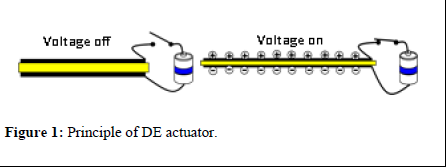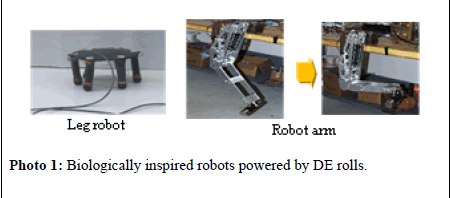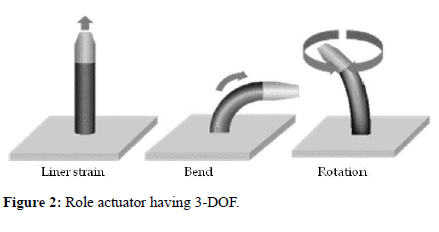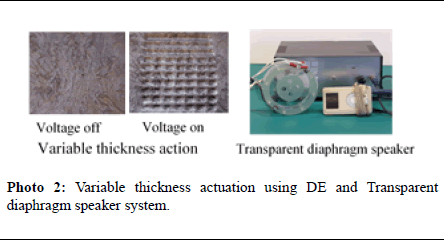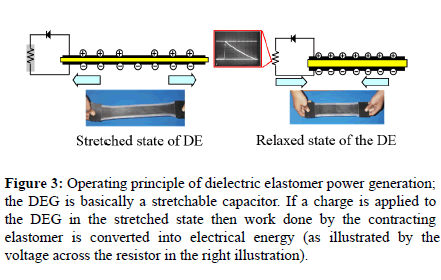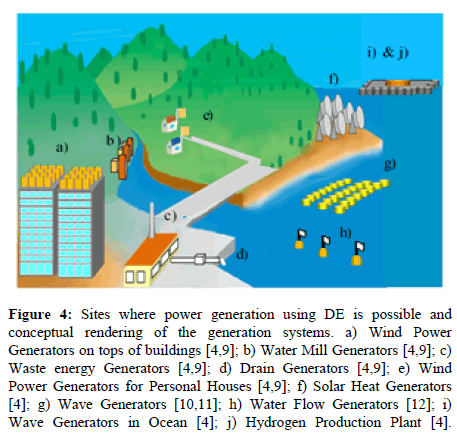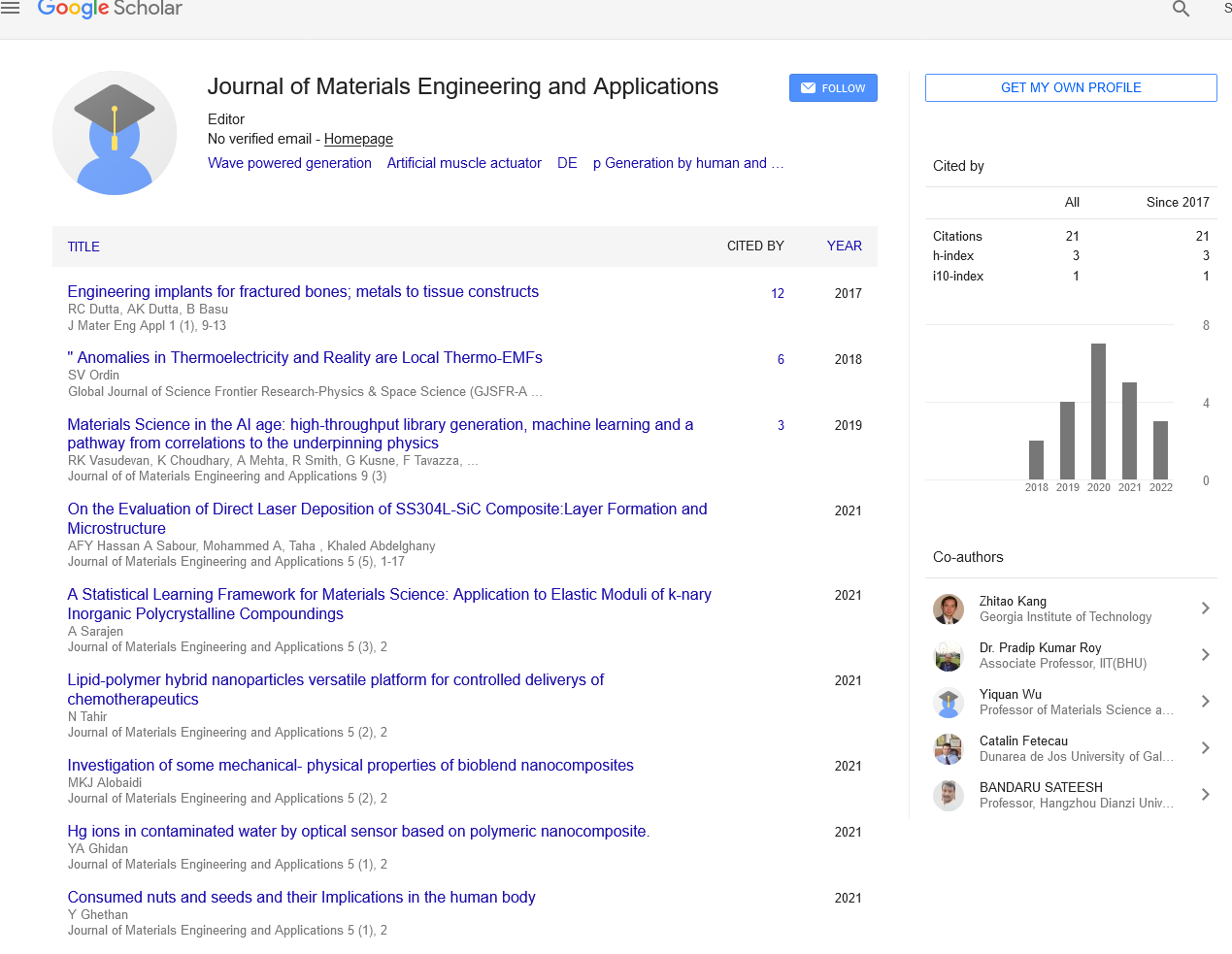Dielectric elastomer artificial muscles (Energy harvesting and high-efficiency actuation)
Received: 28-Aug-2017 Accepted Date: Aug 31, 2017; Published: 05-Sep-2017
Citation: Chiba S. Dielectric elastomer artificial muscles (Energy harvesting and high-efficiency actuation). J Mater Eng Appl October-2017;1(1):2-4.
This open-access article is distributed under the terms of the Creative Commons Attribution Non-Commercial License (CC BY-NC) (http://creativecommons.org/licenses/by-nc/4.0/), which permits reuse, distribution and reproduction of the article, provided that the original work is properly cited and the reuse is restricted to noncommercial purposes. For commercial reuse, contact reprints@pulsus.com
Abstract
Growth in world population and further industrialization combined with concerns about global climate change is causing a surge in demand for clean and renewable energy. This paper discusses the potential of DE (dielectric elastomer), a new energy transduction technology that can be used to harvest energy from the environment or human activities as well as save energy by making light and efficient motors and other devices. In the near future, most of the actuators will be replaced by DE and it will be adopted for many generators.
Keywords
Wave powered generation, Artificial muscle actuator, DE,p Generation by human and animal motion
DE Summary and Operating Principle
DEs are a new type of transducer technology that were first investigated by SRI International (Perline et al.) in 1991 [1]. DE has a very simple structure comprised of a polymer film (elastomer) sandwiched between two electrodes made of a flexible and elastic material [2]. Applying a voltage difference between the two electrodes causes a compression in the horizontal direction and a stretching along the surface [2] (see Figure 1).
Using DE elements, a variety of devices can easily be made, such as linear actuators, diaphragm actuators for fluid pumps, and actuator arrays [3]. Its low cost, light weight, softness, high efficiency, and quietness make the actuator suitable for robots, motors, speakers, and smart materials.
The DE actuator has a fast speed of response (over 100,000 Hz has been demonstrated for small strains), with a high strain rate (up to 600%) [4]. The DE having only 0.1 g of DE materials can lift a weight of 2 kg, using carbon system electrodes [4]. This is suitable for the hands or feet of robots.
Furthermore, the DE can be applied to new functional devices far beyond the actuators, such as new types of DE compliant sensors and electrical power generators [4].
Development of DE Actuators
As elastomers are light and deform like rubbers, they can show flexible movements like bionic actions. They can express “flexible and natural feeling” which systems with motors cannot imitate.
In addition to above, DE actuators do not use any gears and cams, thus enabling high efficiency and safe and smooth driving even if the speed or direction of movement are suddenly changed.
Application of Robots (include Care and Rehabilitation Purpose)
A wide array of proof-of-principle devices for use in legs and arms of robots (see Photo 1), swimming robots, snake like robots, compact inspection robots, gecko like robots for climbing up perpendicular walls or across ceilings, and flying robots, as well as in achieving compatibility with living organisms are currently developed [5].
The leg robot is particularly unique. It has role actuators having 3-DOF, as shown in Figure 2 [5], so it enables sideways stepping like a crab without turning around, when it collides with wall.
Speakers and Smart Materials
Thin and lightweight DE loudspeakers [5] that can be freely shaped have been developed.
Furthermore, we have developed DE transparent diaphragm-speakers for the first time in the world (See Photo 2). Those electrodes were made of single wall CNTs.
DE may also provide new functions in unexplored fields. For example, DE causing nearly instantaneous surface structure change could be used in “variable surface textures” [6] (See Photo 2).
Electricity Generator Using DE
Until recently, the possibility of using DE for electricity generation (energy harvesting) was not well known compared with actuator mode. The operating principle for the electricity generator is rather simple. The DE generator mode uses the actuator mode process in reverse, transforming mechanical energy originating from the physical deformation of the film into electrical energy [7].
The principle of operation in the generator mode is the transformation of mechanical energy into electric energy by deformation of the DE. Functionally this mode of operation resembles piezoelectricity, but its power generation mechanism is fundamentally different. With DE, electric power can be generated even by a slow change in the shape of DE, while for piezoelectric devices higher-frequency impulsive mechanical forces are needed to generate the electric power [7]. Also, the amount of electric energy generated on a per mass basis and the efficiency of conversion from mechanical to electrical energy can be greater than that from piezoelectricity [7,8]. Figure 3 shows the operating principal of DE power generation [5].
Figure 3: Operating principle of dielectric elastomer power generation; the DEG is basically a stretchable capacitor. If a charge is applied to the DEG in the stretched state then work done by the contracting elastomer is converted into electrical energy (as illustrated by the voltage across the resistor in the right illustration).
Figure 4 shows sites where power generation using DE is possible and conceptual rendering of the generation systems [4,9].
Figure 4: Sites where power generation using DE is possible and conceptual rendering of the generation systems. a) Wind Power Generators on tops of buildings [4,9]; b) Water Mill Generators [4,9]; c) Waste energy Generators [4,9]; d) Drain Generators [4,9]; e) Wind Power Generators for Personal Houses [4,9]; f) Solar Heat Generators [4]; g) Wave Generators [10,11]; h) Water Flow Generators [12]; i) Wave Generators in Ocean [4]; j) Hydrogen Production Plant [4].
We hope that those systems may help to stop global warming and other environmental impacts, such as the growth in world population, to maintain a better standard of living throughout the world.
Future of DE
Future Topics
DE is potentially the dream material for a wide range of applications in actuators and power generation devices. However, although research on DE as a generator material has advanced rapidly in recent years, material and application technologies remain not fully developed. Commercialization efforts and development of structures suitable for mass production must be strengthened in order to keep pace with diverse and constantly changing social needs. Future research will be oriented to develop the technologies for diverse applications and to establish a production system that answers market needs.
a) Super artificial muscle: According to current research and development projects, in five years it will be possible to produce a “super artificial muscle” having a strain of 20% with a pressure of 8 MPa. In the near future, this material could be used in prosthetic or orthotic devices that will allow people that are disabled to carry out activities at the same level or better than fully able-bodied people. Moreover, large numbers of DE actuators could be embedded into buildings or other structures to cancel out or reduce the vibration from earthquakes and thereby prevent the collapse of or damage to buildings.
The super artificial muscles could also improve the efficiency of electric transport systems. DE can be used to make a lightweight and efficient motor drive. Light and highly efficient automobiles will be possible, creating a dream vehicle with low energy consumption [4].
b) Carbon management: In the near future, it will be possible to offer a small but powerful generator that answers diverse needs, which will not only stimulate the industrial development of these regions (such as new farming fishery businesses, plant factories, carbon dioxide fixation factories, and derived purification businesses), but also contribute to the decrease of carbon dioxide emissions. In the future, it may be possible to set a large-scale generator system in areas such as a desert using a Stirling engine or a large-scale array with DE sheets, by coupling it to a solar system as a thermal source [4]. As production costs, installation costs, and maintenance costs are remarkably low, an almost revolutionary approach [4,9] would be utilized for reducing CO2 emissions.
Hydrogen is currently being touted as a next-generation transportable fuel, and research work is being conducted on its applications. However, there are several basic problems to solve before being able to consider hydrogen as a cheap and stable means of storing energy. Sequestration of carbon dioxide also requires the use of huge amounts of energy and so almost any approach that relies on non-renewable fuels is not carbon friendly. Compared with these other approaches, we are expecting that DE generators may become one of the promising technologies to the solution of these problems in the future [4].
REFERENCES
- Pelrine R, Chiba S. Review of Artificial Muscle Approaches, Proc. of Third International Symposium on Micro machine and Human Science. Nagoya, Japan. 1992;10:1-9.
- Pelrine R, Kornblue J, Chiba S, et al. High-field Deformation of Elastomeric Dielectrics for Actuators. Material Science and Engineering. 2000;11:89-100.
- Chiba S, Waki M, Kornbluh R, et al. Current Status and Future Prospects of Power Generators Using Dielectric Elastomers. Smart Materials and Structures. 2011;20:1243-11516.
- Chiba S. Elastomer Transducers. Advance in Science and Technology. 2016;97:61-74.
- Waki M, Chiba S. Elastomer Transducers. 2014;978:43154-243.
- Pelrine R, Kornbluh R, Prahlad H, et al. Micro and Nano Fluidic Devices Using Electroactive Polymer Artificial Muscle, Proc. 10th International Conference on Miniaturized System for Chemistry and Life Science. 2006;18:278-80.
- Chiba S. Innovative Power Generators for Energy Harvesting. (EAPAD). 2008;20:121-26.
- Yuan X. Application Review of Dielectric Electroactive Polymers and Piezoelectric Materials for vibration Energy Harvesting, Journal of Physics, Conference Series. 2016;744:12-77.
- Chiba S, Waki M. Extending Application of Dielectric Elastomer Artificial Muscles to Wireless Communication Systems. Recent Advances in Wireless Communications and Networks. 2011;20:435-54.
- Chiba S. Consistent Ocean Wave Energy Harvesting Using Electroactive (Dielectric Elastomer). Artificial Muscle Generators. 2013;104:497-502.
- Chiba S, Mikio W, Koji F. Simple and Robust Direct Drive Water Power Generation System Using Dielectric Elastomers. Journal of Material Science and Engineering. 2017;2:39-47.
- Chiba S, Kenta H, Miko W. Innovative Elastomer Transducer Driven by Karman Vortices in Water Flow. Journal of Material Science and Engineering. 2017;6:121-35.




